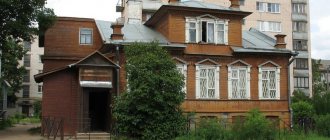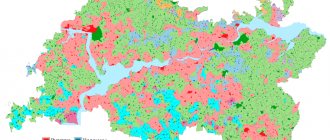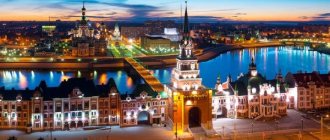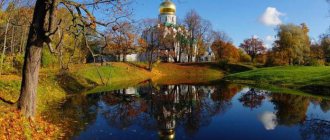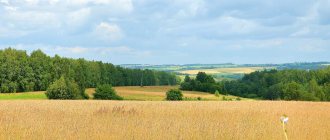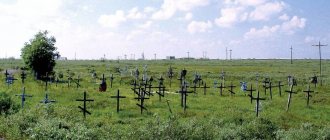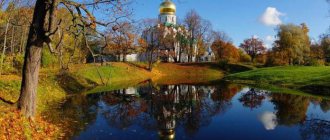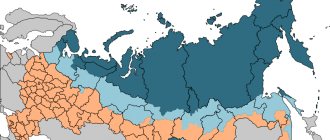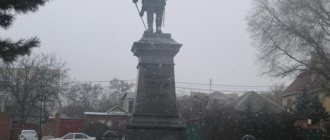Meadows
(Leningrad region)
OKATO code:
41233501
Founded:
1777
City since:
1777 City of district subordination (Luga district, Leningrad region)
Center:
Luga district
Telephone code (reference phone)
| 81372***** | 22-2-22 |
Deviation from Moscow time, hours:
0
Geographic latitude:
58°44′
Geographic longitude:
29°51′
Altitude above sea level, meters:
48 Sunrise and sunset times in the city of Luga
Outstanding historical figures of Russia (natives of the city)
- Alekseev Leonid Nikolaevich - Soviet military leader, lieutenant general of artillery.
- Alekseev Pyotr Petrovich is a Russian doctor of chemistry, full professor at Kyiv University, founder of the Kyiv department of the Russian Technical Society of Naturalists.
- Saltsa Anton Egorovich - Russian general from infantry, commander of the troops of the Kazan Military District.
- Lebedinsky Boris Ivanovich - Soviet graphic artist, painter. Honored Artist of the RSFSR.
- Marshak Boris Ilyich - archaeologist, art historian, orientalist.
- Nilov Gennady Petrovich is a Soviet and Russian film actor.
- Popov Vyacheslav Alekseevich - Russian admiral, commander of the Northern Fleet (1999-2001), deputy of the Murmansk Regional Duma.
- Urgant Nina Nikolaevna is a Soviet Russian theater and film actress. People's Artist of the RSFSR.
- Yakobson Anatoly Leopoldovich - Soviet archaeologist, historian of art and architecture. Doctor of Historical Sciences. Employee of the Institute of Archeology of the USSR Academy of Sciences.
Map
| Meadows: maps |
Meadows: photo from space (Google Maps) Meadows: photo from space (Microsoft Virtual Earth)
| Meadows. Nearest cities. Distances in km. on the map (in brackets along roads) + direction. Using the hyperlink in the distance , you can get the route (information courtesy of the AutoTransInfo website) | |||
| 1 | Batetsky (Novgorod region) | 28 (33) | IN |
| 2 | Plyussa (Pskov region) | 44 (105) | SW |
| 3 | Friendly Gorka | 62 () | WITH |
| 4 | Strugi Krasnye (Pskov region) | 67 (80) | SW |
| 5 | Siversky | 69 (78) | WITH |
| 6 | Soltsy | 73 (147) | YU |
| 7 | Shimsk (Novgorod region) | 77 (144) | SE |
| 8 | Vyritsa | 80 (94) | WITH |
| 9 | Pankovka (Novgorod region) | 82 () | IN |
| 10 | Volosovo | 82 (105) | WITH |
| 11 | Velikiy Novgorod | 86 (97) | IN |
| 12 | New World | 93 () | WITH |
| 13 | Gatchina | 94 (98) | WITH |
| 14 | Kingisepp | 100 (145) | NW |
| 15 | Bottom | 100 (158) | YU |
| 16 | Fornosovo | 101 () | NE |
| 17 | Volot (Novgorod region) | 102 (183) | SE |
| 18 | Kommunard | 103 (139) | WITH |
| 19 | Thais | 104 () | WITH |
| 20 | Lyuban | 105 (165) | NE |
| 21 | Russian-Vysotskoye | 107 () | WITH |
| 22 | Villosi | 108 () | WITH |
| 23 | Porkhov | 108 (132) | YU |
| 24 | Tosno | 108 (135) | NE |
| 25 | Slates | 109 (146) | NW |
| 26 | Proletary (Novgorod region) | 112 () | IN |
| 27 | Miracle | 112 (167) | IN |
| 28 | Ulyanovka | 113 (138) | NE |
| 29 | Krasny Bor | 115 () | NE |
| 30 | Ivangorod | 116 (170) | NW |
a brief description of
The city of Luga is located on the river. Luga, 139 km south of St. Petersburg.
Railway station on the line St. Petersburg - Pskov.
Territory (sq. km): 14
Information about the city of Luga on the Russian Wikipedia site
Historical sketch
Mentioned in the 15th century. in scribe books as the village of Luskoye in the Shelonskaya Pyatina (region) of the Novgorod land.
In 1777, with the establishment of the Pskov governorship, by order of Catherine II: “To establish a new city on the Luga River... naming this city Luga,” construction of a city began at the confluence of the river. Vrevka in the river Meadows. At the same time, the first stone buildings were laid: a church, a post office and a treasury.
The city is named after the river, and the name of the river is related to the Estonian laugas "swamp".
Since 1781, a district town in the St. Petersburg province.
In 1856, in the district town of Luga, St. Petersburg province, there were 2 churches, 167 houses, 28 shops.
At the end of the 19th century. There were 2 factories, a sawmill, a zemstvo hospital, and a theater in the city.
A.S. visited Luga several times. Pushkin, stopping on the way from St. Petersburg to the village of Mikhailovskoye. Poet S.Ya. Nadson, who visited the city in 1875, describes his impressions this way: “Luga is a small county town; If you count the stone buildings there, there are hardly five. The sidewalk is not paved and therefore there is terrible mud in the spring... One pharmacy, two hotels and a tavern - these are the buildings that catch the eye.”
During the Great Patriotic War of 1941-45, Luga was the site of fierce battles on the outskirts of Leningrad. It was occupied by Nazi troops on August 24, 1941. Liberated on February 12, 1944 by troops of the Leningrad Front during the Novgorod-Luga operation.
Economy
Abrasive, foundry and mechanical plants, microbiological and knitting industry enterprises. Mining and processing plant for molding materials.
Meadows is the center of the agricultural region (meat and dairy farming, vegetable growing).
Main enterprises
MECHANICAL ENGINEERING AND METAL WORKING
JSC "Luga Abrasive Plant"
188262, Leningrad region, Luga district, Luga, st.
Krasnoarmeyskaya, 32 Offers:
Grinding wheels, fireproof products: crucibles, muffles, graphite-containing products, “Effect” sponges
FOOD INDUSTRY
SE "Belkozin"
188260, Leningrad region, Luga district, Luga, Kievskoe highway, 137th km
Offers:
Sausage and sausage casings
Universities of the city
Peasant State University named after.
Cyril and Methodius 188230, Leningrad region, Luga district, Luga, Kirova Ave., 69
St. Petersburg Institute of Foreign Economic Relations, Economics and Law (Luga Branch)
188230, Leningrad region, Luga district, Luga, Volodarsky Ave., 44
Museums, galleries, exhibition halls
Luga Museum of Local Lore 188260, Leningrad region, Luga district, Luga, st. Red Artillery, 11-a Phone(s): (81372) 236-41
Architecture, sights
In the vicinity of Luga there is the former Domkino estate, which belonged to the Russian astronomer S.P. Glazenap. Artists I.N. lived in the former Kalganovka estate. Kramskoy, I.I. Shishkin, K.A. Savitsky. In the village of Spitsyno, on the shore of Lake Nalay, N.A. lived and worked. Rimsky-Korsakov.
| Population by year (thousands of inhabitants) | |||||||
| 1856 | 1.4 | 1970 | 31.9 | 2005 | 39.8 | 2015 | 36.5 |
| 1897 | 5.6 | 1979 | 37.7 | 2006 | 39.4 | 2016 | 36.1 |
| 1913 | 10.8 | 1989 | 41.8 | 2007 | 39.1 | 2017 | 35.8 |
| 1923 | 12.9 | 1992 | 41.8 | 2008 | 38.9 | 2018 | 35.3 |
| 1926 | 14.7 | 1996 | 41.5 | 2010 | 38.1 | 2019 | 35.0 |
| 1931 | 14.2 | 1998 | 41.0 | 2011 | 38.6 | 2020 | 34.6 |
| 1939 | 28.0 | 2000 | 40.5 | 2012 | 37.8 | 2021 | 33.7 |
| 1959 | 25.5 | 2001 | 40.2 | 2013 | 37.3 | ||
| 1967 | 29 | 2003 | 40.4 | 2014 | 36.8 | ||
The most significant military events associated with the city
After the liberation of Novgorod, the main task of the 59th Army was an immediate attack on Luga. If successful, Soviet troops had the opportunity to encircle most of the German 18th Army. If about 5 German divisions retreated to the west in the direction of Narva, then to the southwest in the direction of Pskov through Luga - about 14 divisions (approximately 3/4 of the entire 18th Army). For this reason, the Supreme Command Headquarters set the task for the front to “capture Luga no later than January 29-30.”
In the direction of the main attack of the 59th Army, the 6th Rifle Corps was advancing, which was to break enemy resistance in the Batetsky area and, together with the 112th Rifle Corps, operating on the right flank of the army, develop an offensive on Luga. At the same time, the 112th Rifle Corps was supposed to strike with part of its forces in the direction of Finev Lug and cut off the withdrawal route of German troops from the Oktyabrskaya Railway line. Two rifle corps were advancing on the left flank of the 59th Army: the 7th was advancing in the direction of the Leningrad-Dno railway, and the 14th was advancing southwest in the direction of Shimsk.
The German command, realizing the seriousness of the situation, was forced to strengthen and regroup its troops operating against the 59th Army. Several combat groups were formed, which were tasked with delaying the advance of Soviet troops on Luga and ensuring the withdrawal of units of the 28th Army Corps from the area of Lyuban and Chudov. By January 21, the Shulta combat group (2nd Latvian SS brigade, remnants of the 28th Jaeger, combat groups of the 24th, 121st, 21st infantry divisions) occupied the defense in the Spasskaya Polist - Tatino sector, covering the direction to Finev Meadow. The Shpet group (remains of the 1st airfield division and the Nord cavalry regiment), as well as the 8th Jaeger division, occupied defenses on both sides of the Novgorod-Batetsky railway, and the Ferguta group (parts of the Nord cavalry regiment and 290th Infantry Division) covered the direction to Shimsk.
Continuing the offensive, formations of the 6th Rifle Corps and the 29th Tank Brigade, advancing directly on Luga, met stubborn resistance and were unable to immediately overcome the enemy’s defenses. Only by January 26, after several days of fierce fighting, parts of the corps, moving along the Novgorod-Batetsky railway, managed to somewhat push back the enemy, liberated Lyuboliady and reached the Luga River.
The formations of the 59th Army operating on the left flank achieved much greater success. Units of the 7th Rifle Corps broke enemy resistance in five days and moved forward 30-35 kilometers in the western and southwestern directions and reached the Luga River near the village of Trebon. At the same time, the 256th Division, with the support of the 7th Guards Tank and 5th Partisan Brigades, took the Peredolskaya station on the Leningrad-Dno railway by January 27, and the 382nd Rifle Division, pushing back the enemy’s 8th Jaeger Division, occupied the village of Medved and cut off the Luga-Shimsk highway. At the same time, the 14th Rifle Corps and the 16th Tank Brigade cleared the northwestern coast of Lake Ilmen from the enemy and by January 26 reached Shimsk, but were unable to capture it. The enemy, in order to maintain connections between the 18th and 16th armies, stubbornly defended the city.
Since the Shim direction was secondary, the command of the Volkhov Front decided to suspend the offensive in this area and concentrate the main forces in the Luga direction. To do this, on January 25, the headquarters of the 8th Army were reassigned to the 7th (256th, 382nd, 372nd rifle divisions) and 14th rifle corps, as well as the 7th Guards, 16th, 122nd tank brigades and some other units of the 59th Army. The formations of the 8th Army were given the task of facilitating the offensive of the 59th Army by striking at Luga from the south and southeast. The left flank of the 8th Army was to be covered by the 150th fortified area, which took up defensive positions in the Shimsk area.
On January 27, the 59th Army, which at that time included only the 6th, 112th Rifle Corps and one tank brigade, continued the offensive, delivering the main attack on Luga along the Novgorod-Batetsky railway.
Over several days of fierce fighting, units of the 59th Army were unable to break enemy resistance in this area and achieved only local successes. Units of the 6th Rifle Corps were unable to capture the powerful enemy resistance center of Batetsky, and units of the 112th Rifle Corps failed to capture Oredezh and cut the highway to Luga, which allowed units of the 28th German Army Corps to retreat from the Chudovo area.
The formations of the 8th Army did not achieve significant success either. The German command made every effort to recapture the Peredolskaya station, which was of key importance. Units of the 285th Security and 12th Tank Divisions were thrown into battle. The station changed hands several times. Although Peredolskaya ultimately remained with the Soviet troops, in these battles units of the 8th Army suffered significant losses and were unable to continue the offensive on Luga.
The troops of the Volkhov Front failed to take Luga no later than January 29-30, as ordered by the Supreme Command Headquarters. The German command, trying to hold the “Luga line” at any cost, concentrated all available forces in this area - in early February, units of the 12th Panzer, 4 infantry divisions, 6 combat groups of infantry divisions and the remnants of 6 divisions and brigades held the defense here. Soviet troops were unable to overcome the resistance of such a group, which allowed most of the German troops of the 18th Army to retreat from Leningrad and at the same time maintain their combat potential.
The reasons for the unsuccessful attack on Luga at the end of January were insufficient concentration of troops in the main attack directions, difficult terrain, extended supply routes, lack of air support due to bad weather and heavy losses in tank units.
On January 29, the Supreme Command Headquarters, dissatisfied with this development of events, ordered the troops of the Volkhov Front, without getting involved in the battle for Shimsk and Soltsy, to direct all efforts to quickly capture Luga. To accomplish the task, the front troops received 15,000 marching reinforcements and 130 tanks.
However, the formations of the 8th and 59th armies were not able to complete the assigned task and continued active combat operations only a few days later.
Despite the fact that Soviet troops failed to encircle German troops either in the Luga area or in the area southwest of Lake Ilmen, the 18th German Army was put in a critical position. Until the last moment, the commander of Army Group North, V. Model, hoped to hold the front line on the line between Lake Ilmen and Lake Peipsi. However, this idea did not find support from A. Hitler and the OKH, who believed that it was better to retreat than to again put the troops at risk of encirclement. Thus, V. Model was forced to give the order to his troops to begin a retreat.
On February 8, the withdrawal of rear and auxiliary units from Luga began, then the main forces of the 18th Army began to retreat in the direction of Pskov. By the evening of February 12, the city of Luga, which continued to be defended by German rearguard detachments, was taken by the 120th, 123rd, 201st and 46th rifle divisions of the 67th Army with the assistance of the 377th Rifle Division of the 59th Army.
Having liberated Luga, Soviet troops continued the offensive, pursuing the retreating enemy, who began a general retreat to the Panther line on February 17.
Business card of the city
Being the southernmost district in the Leningrad region, it receives more solar heat than others. For this, and for the healing properties of the air caused by the abundance of coniferous forests, the Luga region is rightly called “Crimea in the north”. Coniferous forests on the sands, many lakes and rivers, more warm sunny days, dry air - all this distinguishes this picturesque corner. The natural resources of the area include an abundance of springs with crystal clear water. For example, a spring on the banks of the Naplotinka River in the northern part of the city of Luga (near the Kyiv highway) has long become a symbol of the city, because it quenches thirst and improves the health of not only Luga residents, but also everyone entering or leaving the city. The Luga mineral water deposit is part of the Artesian basin and is used to treat diseases of the musculoskeletal system, neuroses, and the cardiovascular system.
